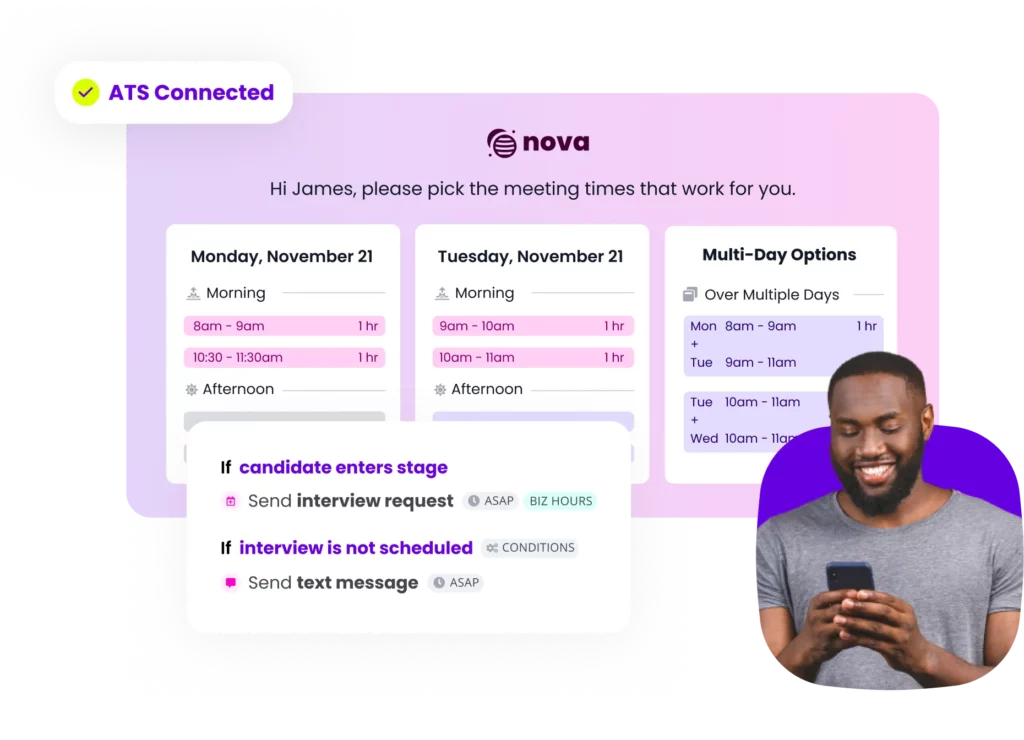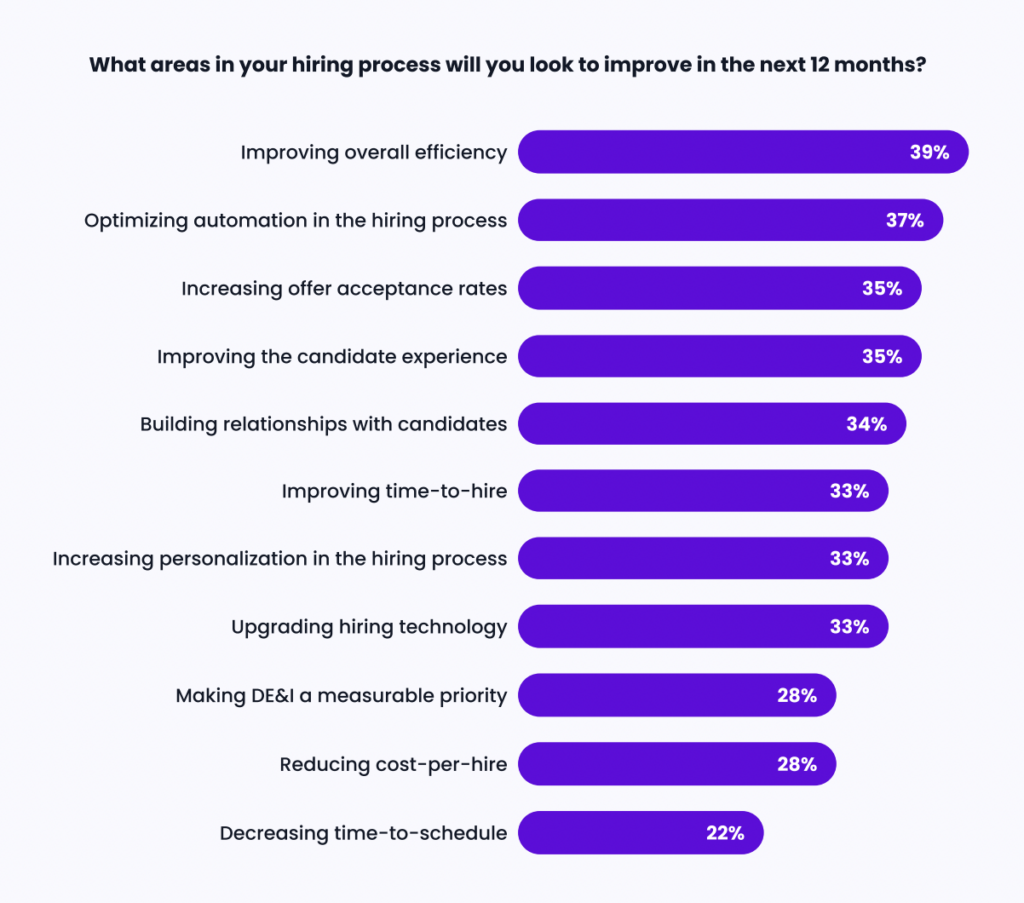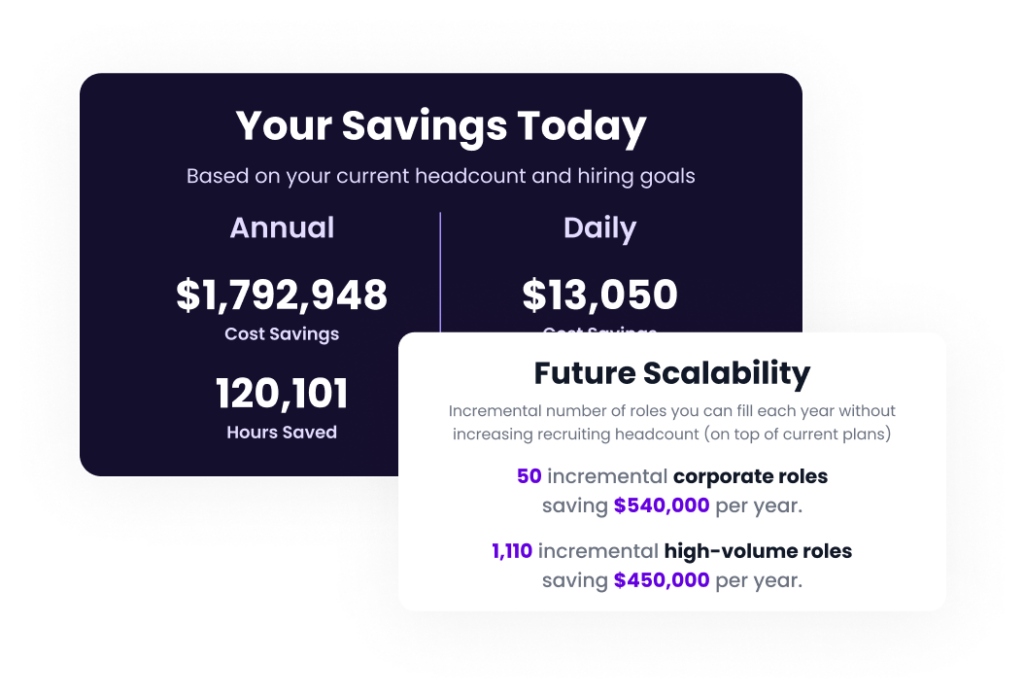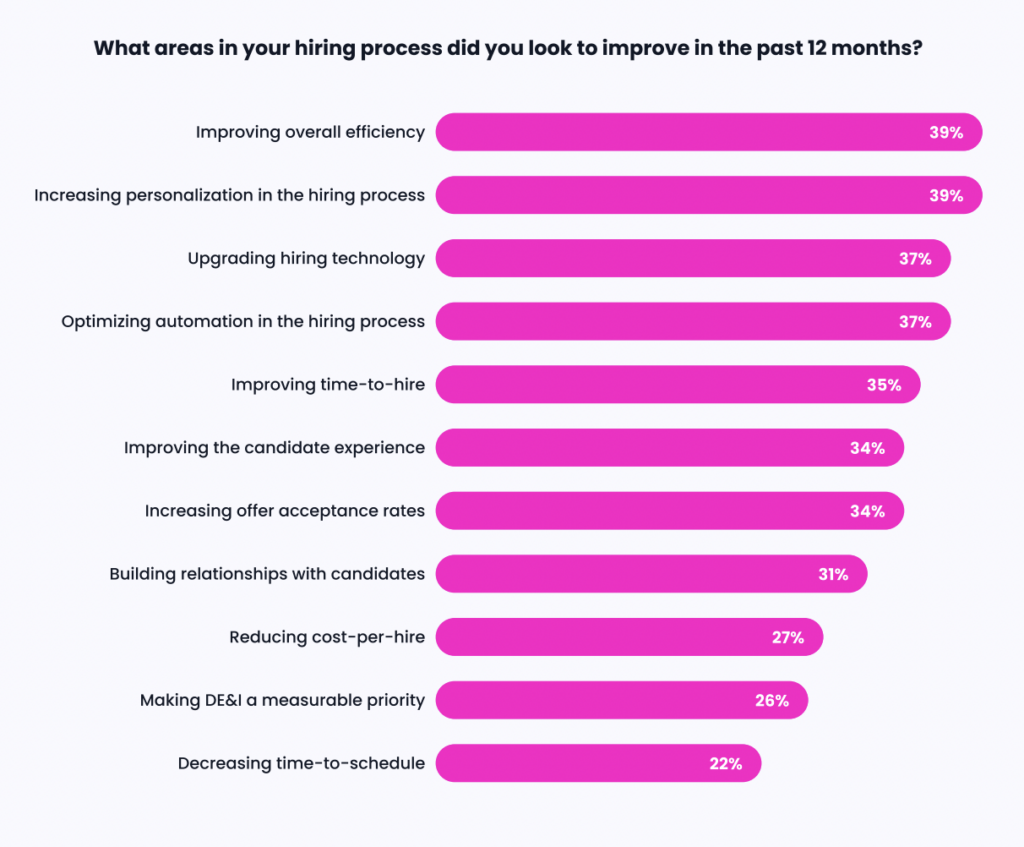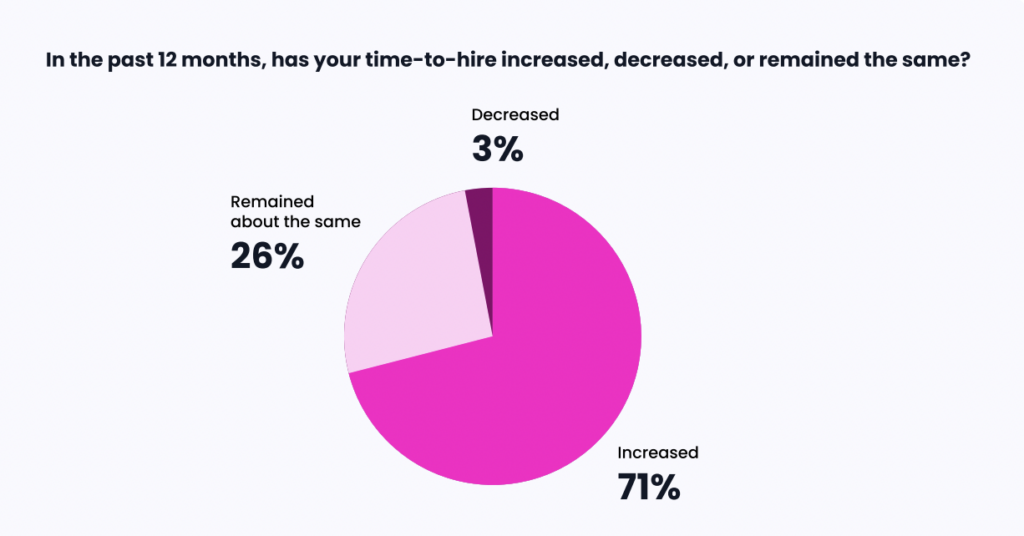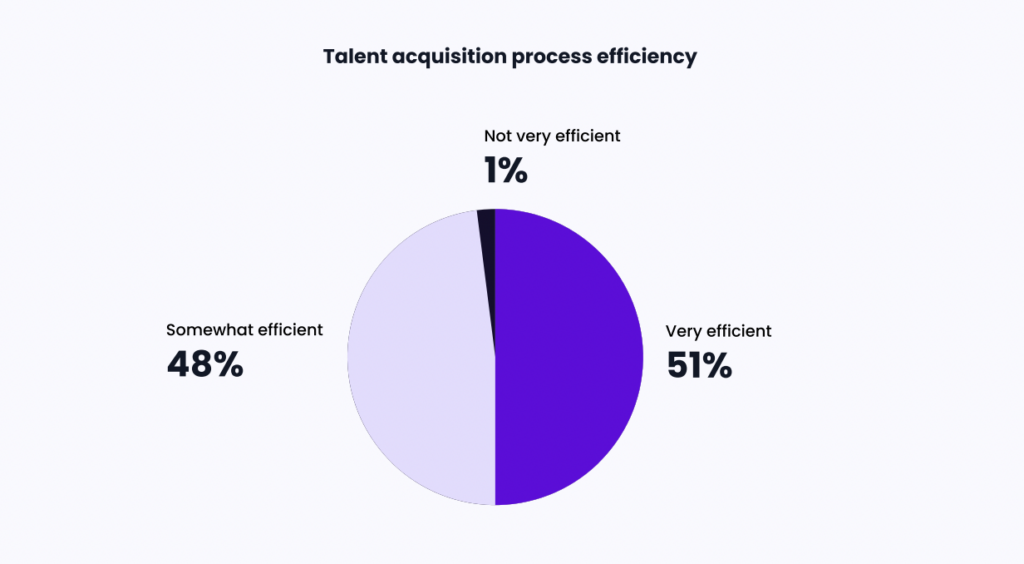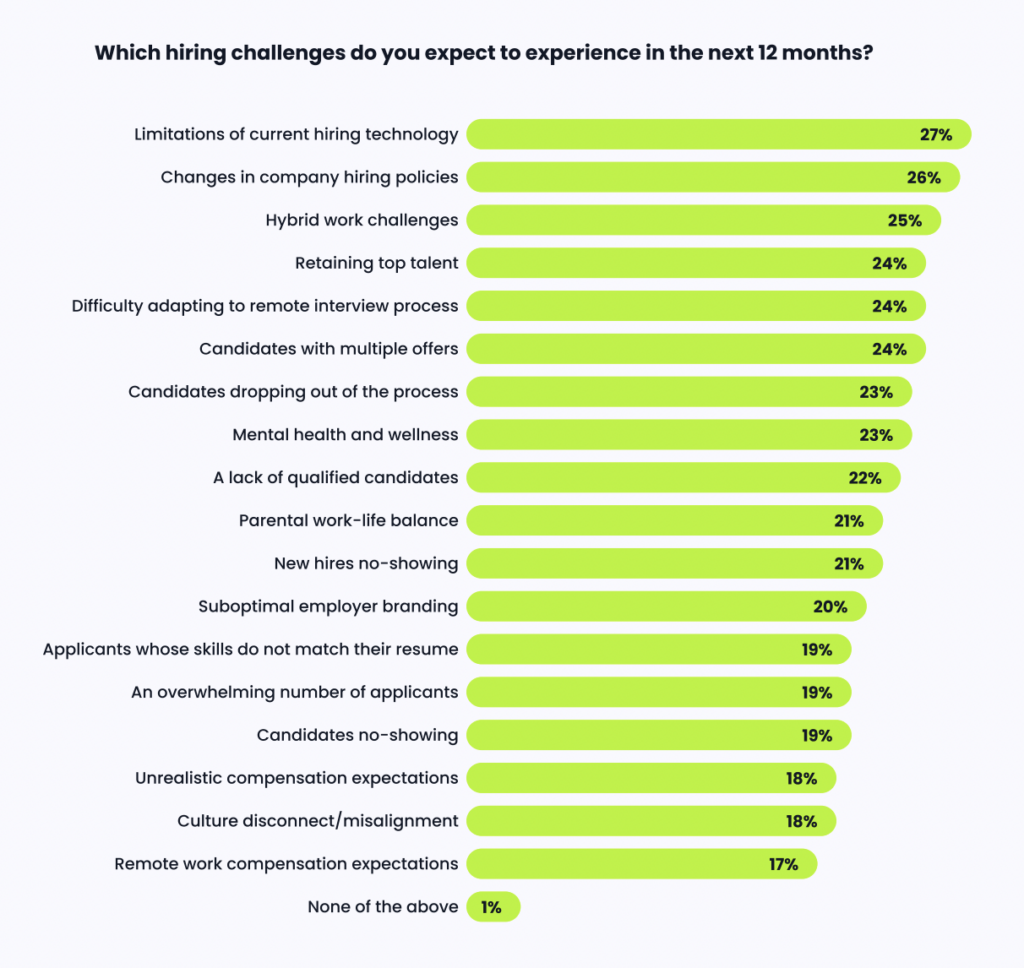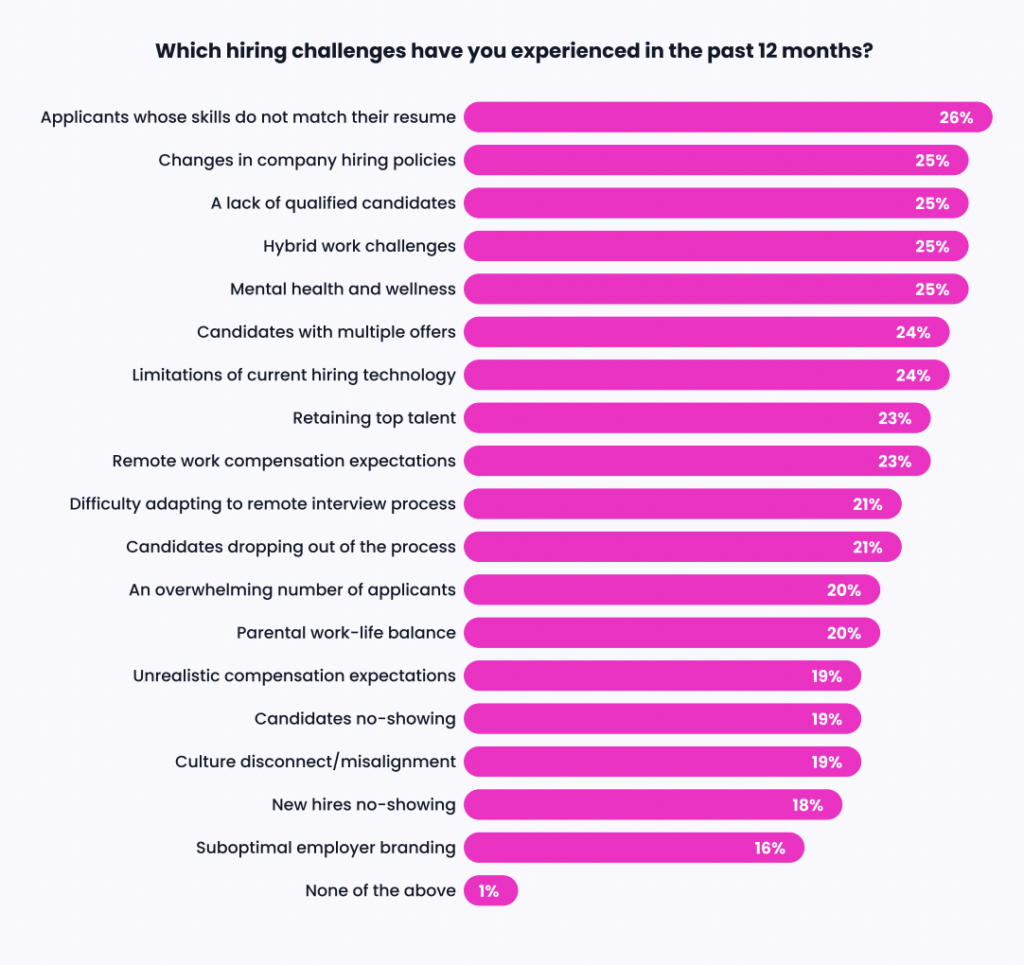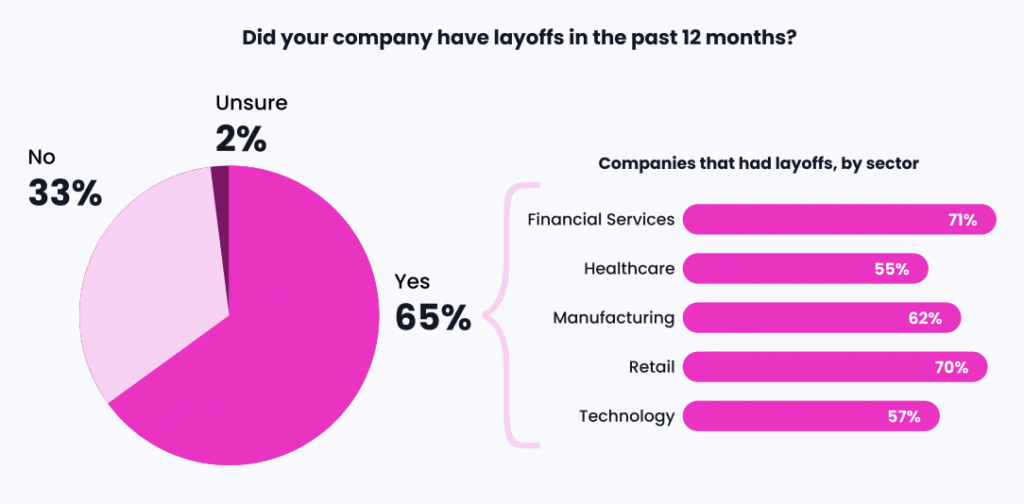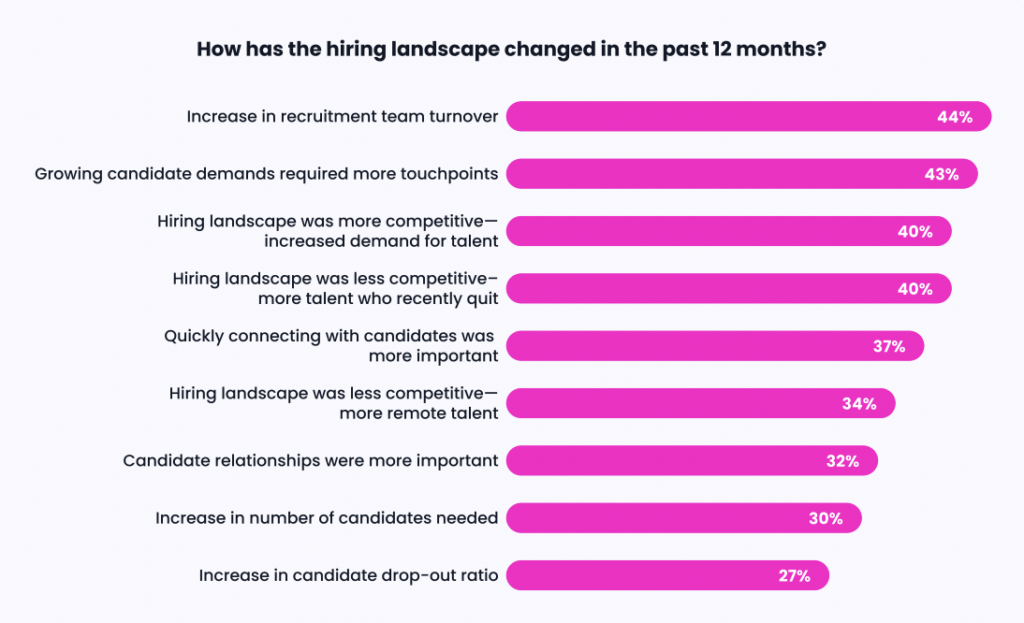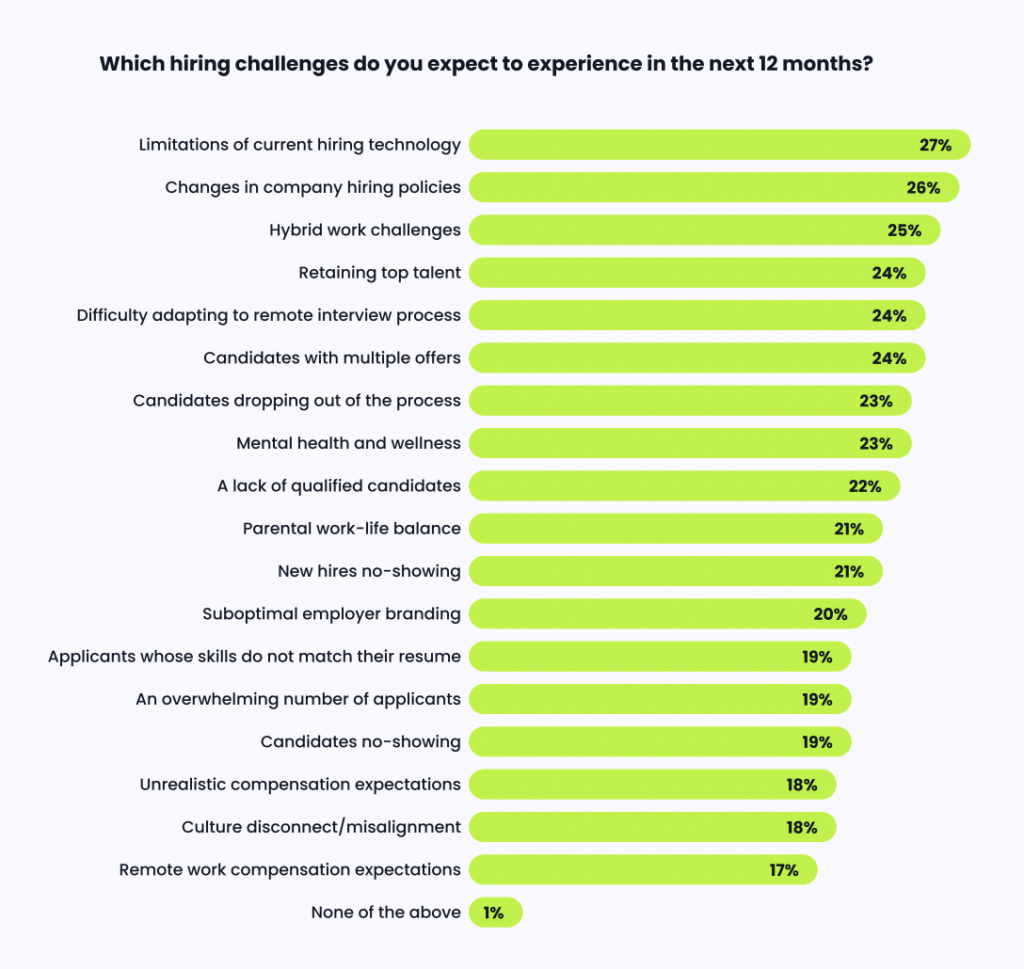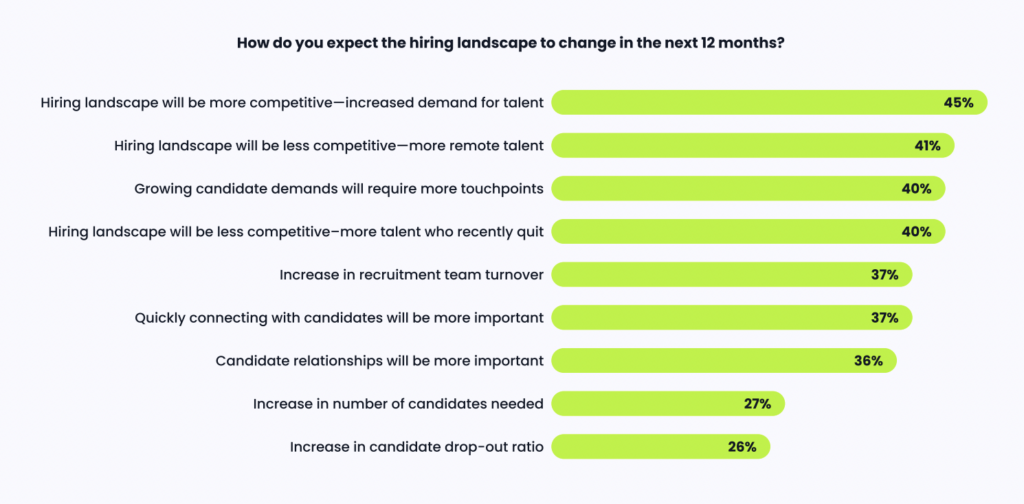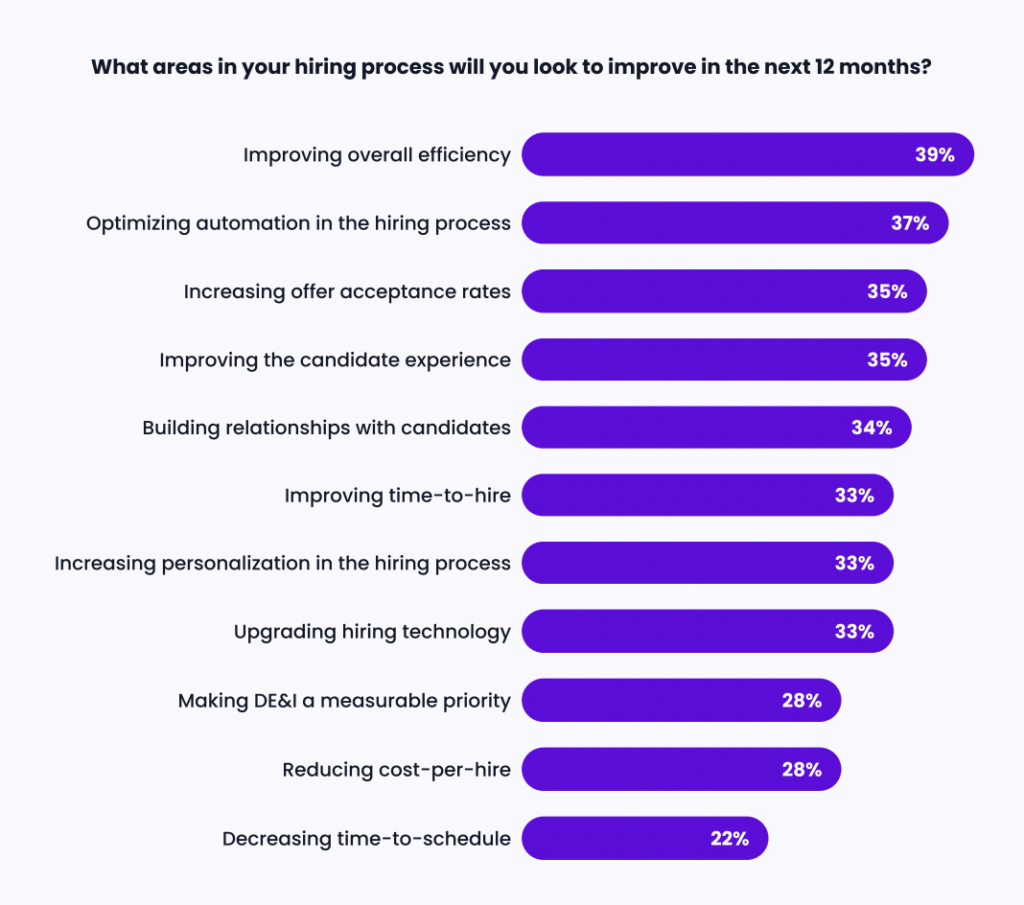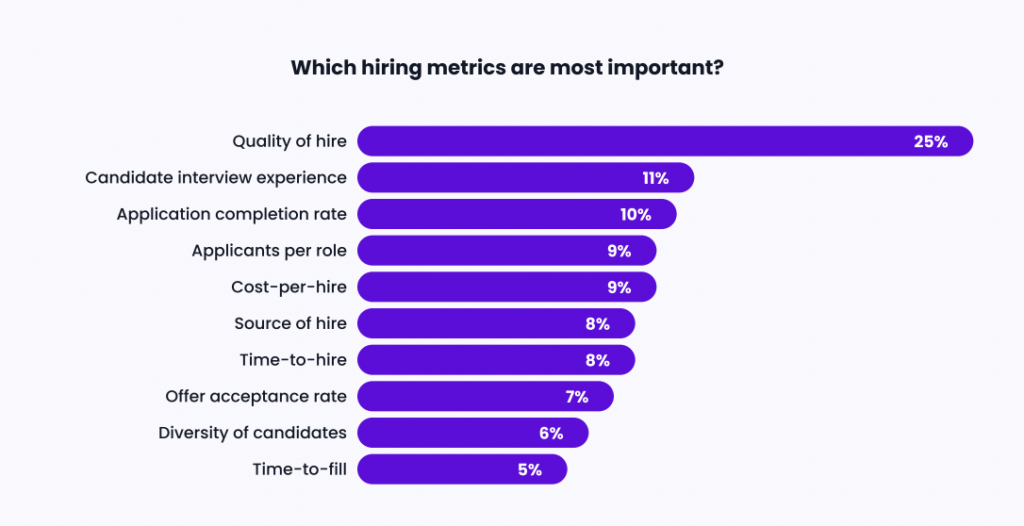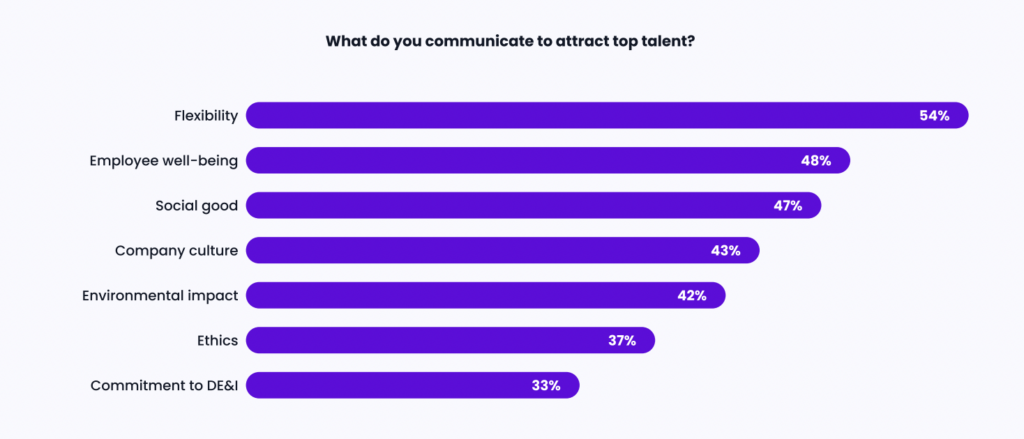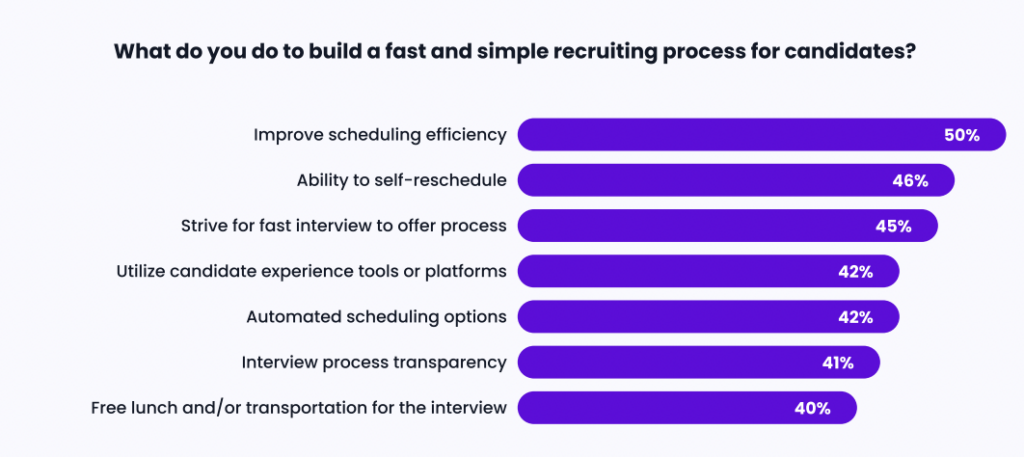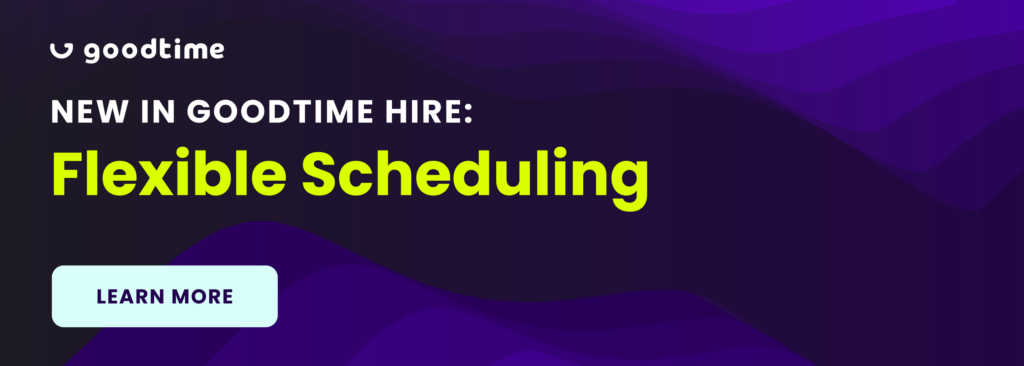Bad hires are expensive. Not only do they take up valuable time and resources for companies, but the problems only get worse the more senior-level the hire is. To avoid costly mistakes, it’s essential for recruiters and hiring managers to facilitate an efficient hiring process with clear and open communication. However, many hiring teams overlook a crucial step: the intake meeting.
Outlining expectations between recruiters and hiring managers in an intake meeting is a surefire way to hire the best talent, all while preventing the wasted time, frustrations, and headaches that result from choosing the wrong candidate.
Unlock 2024’s top hiring strategies: Insights from 500+ TA leaders
Discover proven solutions to 2024’s biggest hiring challenges – straight from the highest-performing TA teams.
What is an intake meeting?
An intake meeting is when hiring managers and recruiters align on what the ideal candidate for a position looks like. This meeting takes place at the very beginning of the hiring process and should cover:
- Goals for the recruiting process
- A profile of the ideal candidate
- Job requirements
- Job title and salary
- Stages of the hiring process and touchpoints
- Sourcing strategies
The intake meeting occurs before the role is posted to ensure hiring managers and recruiters have a thorough understanding of how the hiring process should pan out. When done correctly, intake meetings help the interview process run smoothly by minimizing confusion down the road.
How effective intake meetings accelerate recruiting
1. Sharpens your shared understanding of the ideal candidate
The first step to a fast, efficient hiring process is to create an in-depth profile of the ideal candidate for the role. Before any interviews even take place, the entire hiring team should have a clear image of the skills, experiences, and traits they’re looking for.
Intake meetings offer the perfect opportunity for recruiters and hiring managers to carve out these expectations together. After developing an optimal candidate profile, the profile can be used to write a well-defined job description that attracts the applicants the hiring team is looking for.
Armed with a defined image of the best possible candidate, hiring teams can use this plan to easily identify applicants who do not meet the basic requirements discussed in the intake meeting.
2. Strengthens the recruiter-hiring manager relationship
An intake meeting acts as the glue that’s needed to hold the recruiter-hiring manager relationship together. The stability of this relationship heavily dictates whether a hiring process succeeds: studies show that a strong relationship between recruiters and their hiring managers is one of the biggest drivers of talent acquisition performance.
In our recent conversation with TA leaders about tech hiring challenges, Ahryun Moon, Co-Founder and Head of Company Strategy at GoodTime, emphasized the importance of intake meetings for creating a shared understanding with the hiring manager of what a “top performer” actually looks like. Amanda Richardson, Head of People at Coderpad, backed this point up, saying, “Being transparent and clear along the way really goes a long way to align the recruiting team and the business team around what our objectives are.”
Jenny Jongejan, an experienced professional in talent acquisition, presented 4 things she always seeks to hash out clearly in intake meetings:
1. The reason for hiring: Which goal will this position influence?
2. The type of person you’re seeking: Which abilities, past experiences, and behavioral traits are you after?
3. The methodology for candidate assessment: How will you evaluate candidates at each interview stage to determine if they’re a good fit?
4. The benchmarks for evaluation: How do you differentiate between an average response and an outstanding one?
You can see Jenny’s full remarks in the clip below.
Setting aside ample time to meet with one another streamlines the hiring process by ensuring that all parties agree on realistic objectives. In turn, this prevents any future miscommunication or confusion that might prolong the hiring process or result in a costly bad hire.
For instance, rather than facing difficulties down the line with trying to fill a role within too short of a time period, intake meetings allow recruiters to candidly discuss if a hiring manager’s expectations on the hiring process are actually attainable.
The trust, rapport, and mutual support that intake meetings foster between recruiters and hiring managers bolsters the hiring process with a solid foundation for success.
3. Reduces your time-to-hire
Intake meetings play a key role in reducing time-to-hire. Nearly every aspect of an intake meeting — from the way that they eliminate potential roadblocks to the way that they reduce back-and-forth communications between the recruiter and the hiring manager — is engineered to promote a quick hiring process.
In a time when competition for the best talent is more intense than ever before, companies with the most efficient hiring come out on top. Intake meetings boost recruitment efforts with exactly the speed that hiring teams need. While 55% of organizations do not utilize intake meetings, 30% admit that the hiring process takes longer without them.
When recruiters collaborate with hiring managers in intake meetings, they’re able to fine-tune their sourcing and drastically reduce their screening time. Some teams even review LinkedIn profiles that demonstrate who their ideal candidate is to further reduce their time-to-hire and establish how they can identify the best matches for the job.
Join a Slack community just for recruiting pros
See what’s going on in the industry’s best place to connect, learn, and grow. Join over 2,500 recruiters and TA leaders in our free, private Slack community.

10 key questions to ask in your intake meeting or recruiting intake form
An intake meeting serves as your compass, helping you map out the journey to successful recruitment. To ensure you’re on the right path, consider these crucial questions to raise during your intake meeting, or include them in the intake form so you can discuss them together with the hiring manager in your meeting:
1. What are your goals?
Let’s start by setting the destination. What are your objectives for this hiring process? Understanding the bigger picture will guide our efforts and ensure we’re all moving in the same direction.
2. Who’s the ideal candidate?
Paint a vivid portrait of the candidate you’re seeking. What skills, experiences, and qualities should they possess? This shared vision will shape our search strategy and ensure we’re all on the same page.
3. What’s non-negotiable?
Let’s identify the must-haves. What are the essential qualifications, certifications, or experiences required for the role? Pinpointing these criteria upfront will help us sift through candidates effectively.
4. What’s the job’s scope and impact?
Understanding the role’s significance is vital. How does it fit into the broader team and company goals? This insight will help us attract candidates who are aligned with the role’s purpose.
5. How does the team collaborate?
Let’s dive into the team dynamic. How does this role interact with other departments or team members? This understanding will help us identify candidates who can seamlessly integrate and contribute.
6. What’s the timetable?
Time is of the essence. What’s the expected timeline for sourcing, interviewing, and onboarding? Aligning expectations here will help us maintain a steady pace and avoid any unnecessary delays.
7. How can we showcase the company in the hiring process?
Candidates are looking for a match beyond just skills. What aspects of the company culture and mission should we highlight to attract the right talent? This insight will help us craft compelling job descriptions.
8. How do you evaluate success?
Defining success is crucial. How will we measure the impact of this hire? Establishing clear metrics will guide our assessment process and ensure we’re all working towards the same outcome.
9. What’s the interview process going to look like?
Let’s map out the journey for potential candidates. What stages will they go through? Who will be involved in the interviews? Clarity here will streamline the selection process.
10. What can we learn from past hires?
Drawing from experience can be enlightening. What lessons have you learned from previous hires in similar roles? We want to both hire and retain top talent, not just initially get them on board. This wisdom can guide our approach and refine our strategy.
Asking these fundamental questions during your intake meeting can help lay a solid foundation for a streamlined and effective hiring process. Each response acts as a building block, constructing the path toward finding the right candidate for the role.
Don’t skip the recruiting intake meeting
As the recruiting world continues to change, one constant remains: the significance of the intake meeting.
This often underestimated step has the potential to redefine your hiring process. By collaboratively charting the course, clarifying expectations, and fostering a strong recruiter-hiring manager partnership, the intake meeting sets the stage for efficient hiring and a better candidate experience.
And while you’re at it, make sure you’re also regularly holding quality interview debrief meetings with hiring managers as well. This is your chance to examine candidates against the qualities you identified in your intake meeting. So quality intake and debrief meetings really go hand-in-hand.
Ready to learn more about streamlining your recruiting processes? See how GoodTime’s interview scheduling software can help you decrease your time-to-hire.



